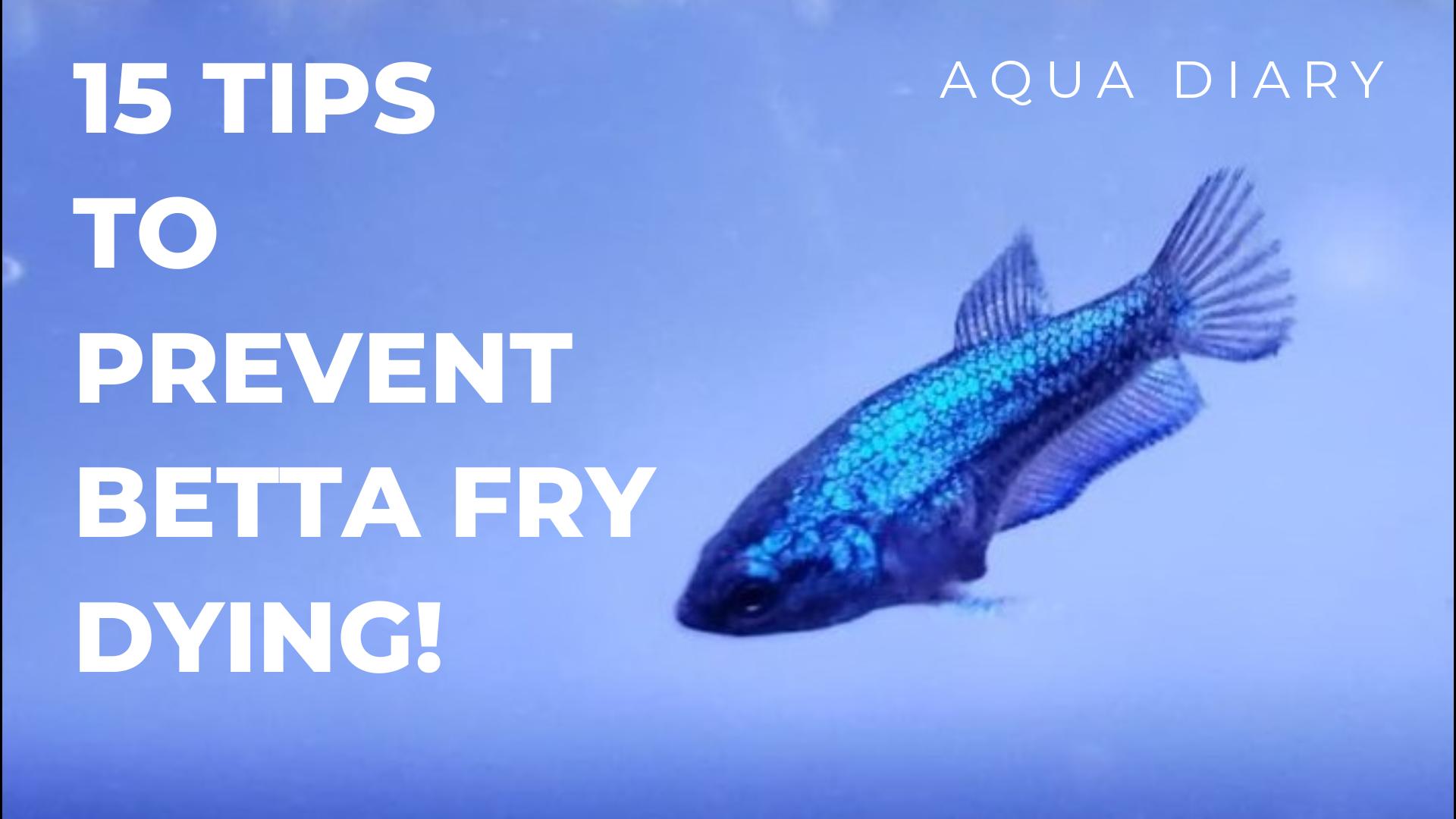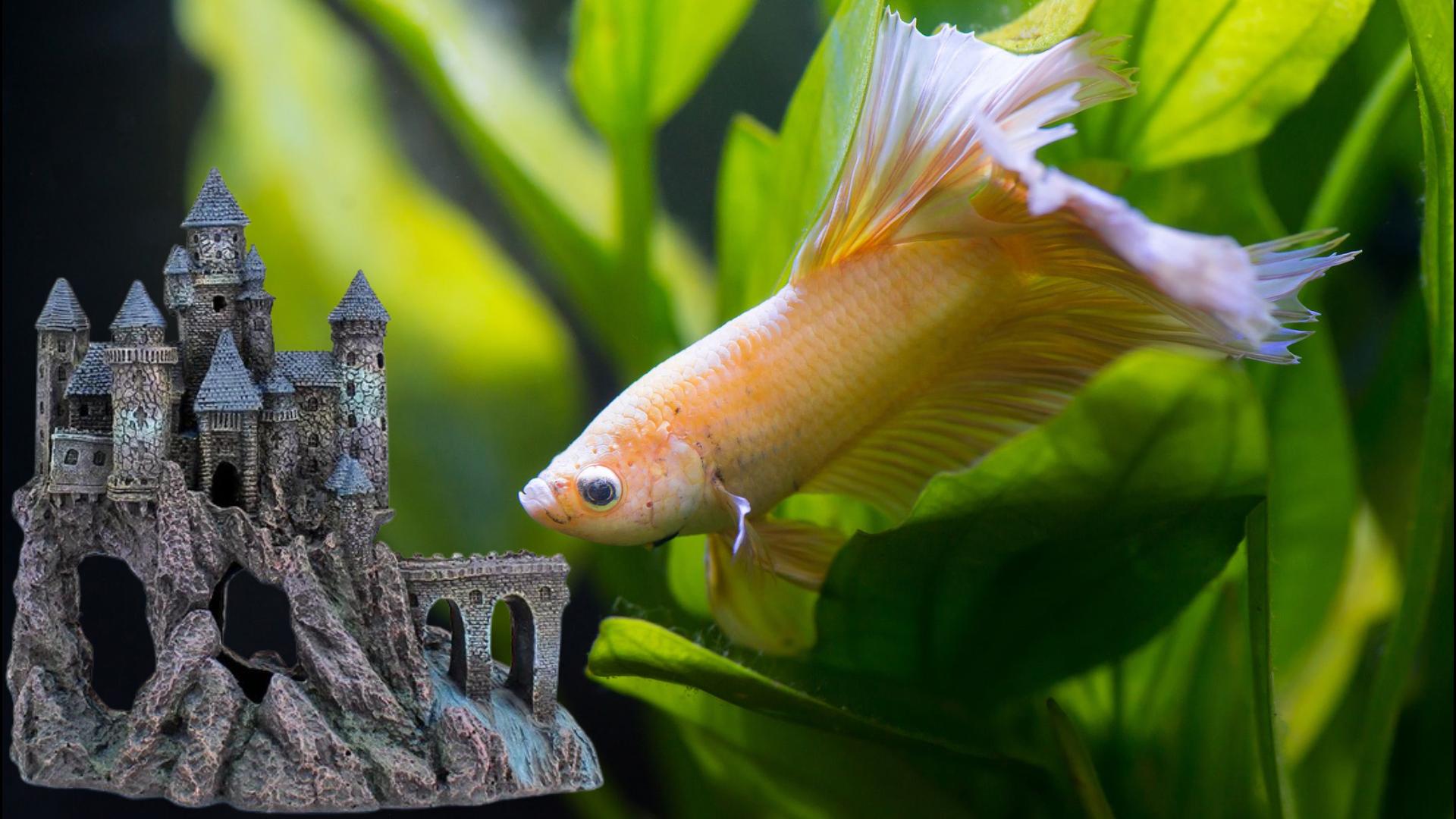In my experience, breeding betta is much easier than keeping betta fish fry alive and growing them healthy. I listed common mistakes betta breeders make during fry growth and how to avoid them.
Also explained many tips and tricks throughout this post about betta fish fry care, hope this will help you successfully raise a betta fry on your next breeding attempt.
1. Keep the tank temperature right
Betta fry require a slightly different temperature than adult fish, or they may get sick. Betta fry tank temperature is one of the key reasons for breeding failure. These small creatures are very susceptible to cold water.
I would personally keep them at 82 to 85°F for a better survival rate. Also make sure there is not much fluctuation in the temperature. It is easy to maintain the temperature of grow-out tanks under direct sunlight, by covering the top, but of course it is based on the weather conditions where you live.
2. Do not feed them for 3 days. – Betta Fish Fry Care
I can’t stress this enough. Don’t feed your adult or fries until the fry are 3 days old. Usually, betta fry will get enough protein and nutrients from the egg layer itself which is good enough for them to survive for the first few days.
After all fry have started swimming freely, which is usually on the fourth day, you can start feeding them.
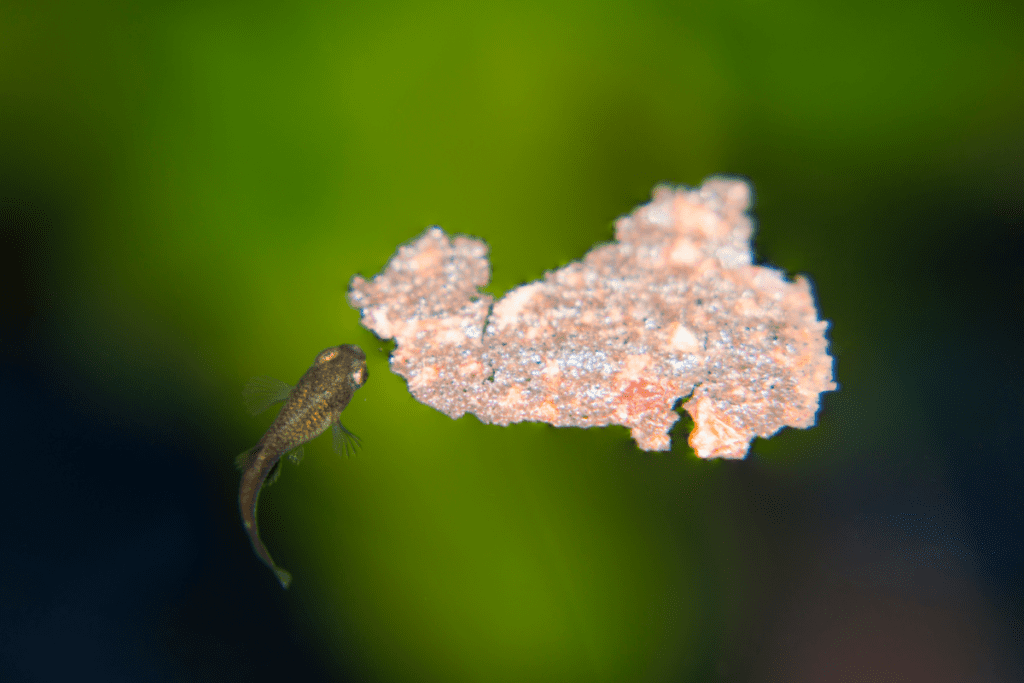
3. Move adult fish at the right time.
As soon as all my fries have started swimming, I always move my male betta fish. It usually takes 3-4 days from breeding day. Although some of my male betta fish in the past took care of fry very well, I do not risk keeping male betta fish in my tank after 4 days.
I found the easiest way to remove male betta fish is to use my kitchen spoon. In this way, the male can be removed without disturbing the fries or tank conditions.
This is very critical step on breeding. In reality, male betta can eat their frys for various reasons. Actually, few of them part of breeding process.
So don’t panic if your betta male eating few of the frys, more detail can be found in this post. Why Betta male eating their eggs and frys?
Separating the male fish is also crucial for his recovery. You can start feeding him high protein food as he will be very hungry after 4-5 days of not eating.
I will also add aquarium salt and almond leaves to his tank to help him recover from breeding stress.
4. Make sure they get the best food.
On the fourth day, I feed infusoria to betta fries. Always make sure their belly is rounded and full, this is key to their growth rate. I will introduce them to baby brine shrimps, micro-worms, and later to bloodworms after they get used to the initial food source.
Micro-worms, Banana Worms, Brine Shrimps, Vinegar eels, and Grindal Worms are all great fry food sources for betta fries. But rinse them in tap water well before feeding them. It’s a critical step to avoid water contamination.
I personally feed 3-4 times a day for the first week in small portions and increase the quantity by the 2nd week. It’s better to prepare infusoria and baby brine shrimp cultures well in advance to ensure they are ready to feed by the 4th day of your betta fry.
If you have no access to live-food, egg yolks can be a temporary alternative food source. Check this post for be best food options for betta fish.
5. Separate the fries by size – Betta Fish Fry Care
It is very common to see some fries from the same spawn being much bigger than other fries. In contrast, some will be very small. It’s critical to separate them based on size, otherwise bigger fry will grow even faster as they can fight for food better.
This makes the weaker fry weaker. At some point, your bigger fry will start seeing the weaker ones as a food source and eat them. So, it’s always better to check them every 2-3 days for a few weeks and separate them by size. I found this video on how to jar your betta fish? helpful and covered with more insights.
6. Condition your grow-out tank.
Picking the right size of grow-out tank and moving the betta fries at the right time is critical. I typically move them to a grow-out tank around 2-3 weeks based on individual spawn rates.
There is no hard and fast rule here, but this works much better for me than moving them early. Grow-out tanks must be at least 20 gallons, but bigger is better. I usually prepare my grow-out tank atleast 3-4 days in advance by adding almond leaves, a few drops of water conditioner and methylene blue.
In addition, I usually add some plants as possible. Float the original spawning tank inside the grow-out tank for 10-15 minutes and slowly mix the water. Be careful when acclimating as these fry are highly sensitive to sudden water parameter changes.
7. Do not overfeed – Betta Fish Fry Care
I can’t stress this point enough. Overfeeding them will spoil the tank condition and infect your fries. Easy way is to feed small portions multiple times a day for the first 2 weeks until you move them to a grow-out tank. I usually feed them 3 times a day for the first 2 weeks and reduce it to 2 times a day after that by increasing the quantity. Also clean up waste and excess food every day.
Specially, if you feed egg yolk or grained pellets, make sure to do a partial water change and clean-up. Once they are moved to the grow-out tank I usually add a few shrimp to the tank to clean excess food waste.
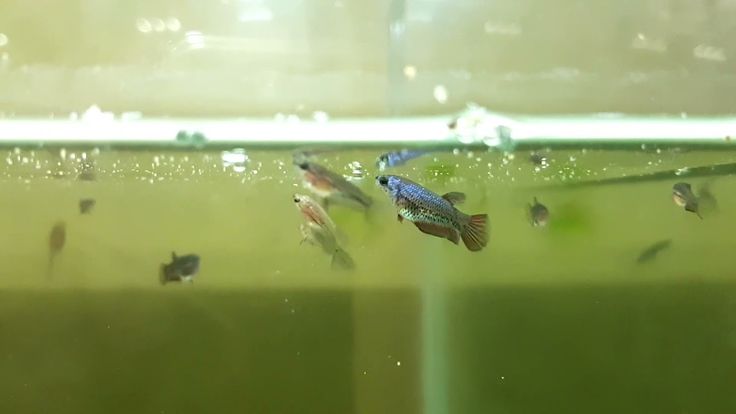
8. Introduce pellets
You can introduce pellets to your betta fry when they are 4 to 5 weeks old.
You can crush the pellets smaller and feed them to your fish. If you don’t feed pellets to your fry when they are young, there is a chance they don’t like the taste of pellets once they are fully grown, which often causes confusion with your buyers and compliant that betta fish is not eating. I feed them pellets in the morning when they are really hungry, so they will intend to try and get used to them.
9. Change the water frequently
Water quality is one of the most critical things to a successful spawn and fast growth.
I usually perform 20% water changes every 2-3 days in my breeding tank for the first 2-3 weeks until I move them to their grow-out tank. I also remove dead fry and waste using a turkey baster during these water changes.
This method works well because it doesn’t disturb tank conditions and also cleans up the tank well, but it requires some patience.
Contaminated water is one of the highest risks to Betta fry; this is one of the most common reasons for betta fish to die. Once I move them to the grow-out tank I will perform 50% water changes every 3-4 days for the next few weeks until they fully grow.
I will still continue my cleaning process using a siphon filter during my water changes.
10. Never change 100% of the water
I don’t water change for the first few days, perform minimal water changes at 20% for the first 2-3 weeks till I move them to a grow-out tank. I would never change full water recycle in my grow-out tank for the first 2 months unless my fries are infected, which requires treating water immediately to save them. Please add medicine and almond leaves to water every time you change a portion of water.
11. Keep safe from disease – Betta Fish Fry Care
Betta fry are most susceptible to white spot, fungus, and velvet diseases. It’s difficult to notice these infections on these tiny fry with normal eyes. When you look closer you may see white dots on your fry. You should be aware that white spot disease is contagious and will kill your entire spawn if you don’t address it quickly.
It’s basically a parasite infection that absorbs nutrients from your fry that cause them to die due to poor health. Do 100% water-change every day for the next few days and treat with methylene blue.
Example, feeding egg yoke is one of the ways to feed your fries for the people who don’t have access to live food, but it has the risk of easily overfeeding them or polluting the water quickly which can introduce other issues to your fries.
Betta fry attack and hunt naturally consume moving objects, which is why infusoria, Miona or baby brine shrimp are better than egg yolks for them.
12. Remove waste and excess food daily
I strongly suggest removing excess food and waste daily. I use the turkey baster to slowly siphon the waste from the bottom without disturbing the fries. In my experience, it worked well for cleaning the breeding tank.
You can start using an airline tube or siphon vacuum to suck up wastes once you move them to the grow-out tank to speed up the process.
13. Keep a proper light source
Light is definitely needed for the fry grow-out tank. Warm light with a covered tank works better. It can even be direct sunlight as long as your weather supports it. Also, it’s fine to keep the lights off at night. I keep my grow-out tanks outside during the summer months which greatly helps with fry growth.
You can check out the lights I use in my description and first comment if you’re interested. More betta breeding insights are listed in 8 Mistakes to avoid on Betta Breeding post.
14. Need a filter – Betta Fish Fry Care
A grow-out tank must have a filter to supply oxygen and clean the water. But don’t add a filter to the breeding tank before the fries start swimming.
This is because any water current on the breeding setup may easily disturb the bubble-nest and stress your male. After the first 4-5 days of hatching I will add a filter to my breeding tank. But I always keep the grow-out tank filter running until they fully mature.
15. Jarring at the right time
As you know there will be aggression within the fry tank as they grow, eventually aggressive males will need to be separated. So remember to always have multiple containers on hand to be ready for jarring.
In my experience, there is no specific age to jar fry. Spawning growth varies depending on genetics, water changes, and food. In general, fry start showing colors around 8 to 9 weeks old. It’s at this point that they begin their nippy behaviors. You can tell they are ready when the males have longer fins, stronger colors! They will flare at each other and try to tear each other’s fins.
You don’t need to jar all the fries at once. It is best to start by moving the most colorful and aggressive males to jars first. As you take out some, others will take their place and become dominant. By 3 months all males will be out of the grow-out tank.
You’ll need a container for each male, whether it’s a jar, bottle, cup or whatever. It’s also fine to move females into jars, but if there’s not enough space, they can be kept in a tank together. In general, females can live together in a community tank.
Avoiding these common mistakes will likely increase your betta fries’ survival and keep them healthy. The video version of this post can be found in our youtube channel with my fish tanks and breeding setups.
Now let’s discuss how to determine if eggs are fertilized, egg-laying frequency, tank conditions for successful hatching, and more interesting details about hatching techniques.
1. How To Tell If Betta Eggs Are Fertilized?
Fertilized eggs will become yellowish or brownish with a few gray spots. The size of fertilized eggs grows slightly over time. You can also see through the eggs, spotting the tiny fry and their yolk sack inside. You will see two black dots in the egg, which are the eyes of the fry.
The male betta plays a crucial role in caring for eggs. He carries them to a bubble nest at the water’s surface. Look for white spots among the bubbles, as there might be eggs appearing in the bubbles. The male betta protects fertilized eggs. Usually, eggs hatch within three days. If an egg hasn’t hatched after three days, it is likely unfertilized.
2. How Many Eggs Do Betta Fish Lay? – Betta Fish Fry Care
Female Betta fish typically produce 30 to 40 eggs per week. So Betta fish can lay varying numbers of eggs, depending on individual breeding periods and other tank factors.
Based on my experience, a female betta fish can lay 70 to 300 eggs during a single spawning event. The actual number can be influenced by factors such as the female’s age, health, water conditions, and breeding conditions.
3. Can Betta eggs hatch without bubble nests?
Betta eggs can hatch without a bubble nest. Building a bubble nest to protect the eggs, is not necessary for successful hatching. The bubble nest helps the male keep the eggs close together. It helps the fry get better oxygen and provides a safe environment. It is still possible for betta eggs to hatch without a bubble nest, but the spawning rate will be low.
The male betta’s role in caring for the eggs and the overall conditions of the water and environment play important roles in the successful hatching and survival of the eggs.
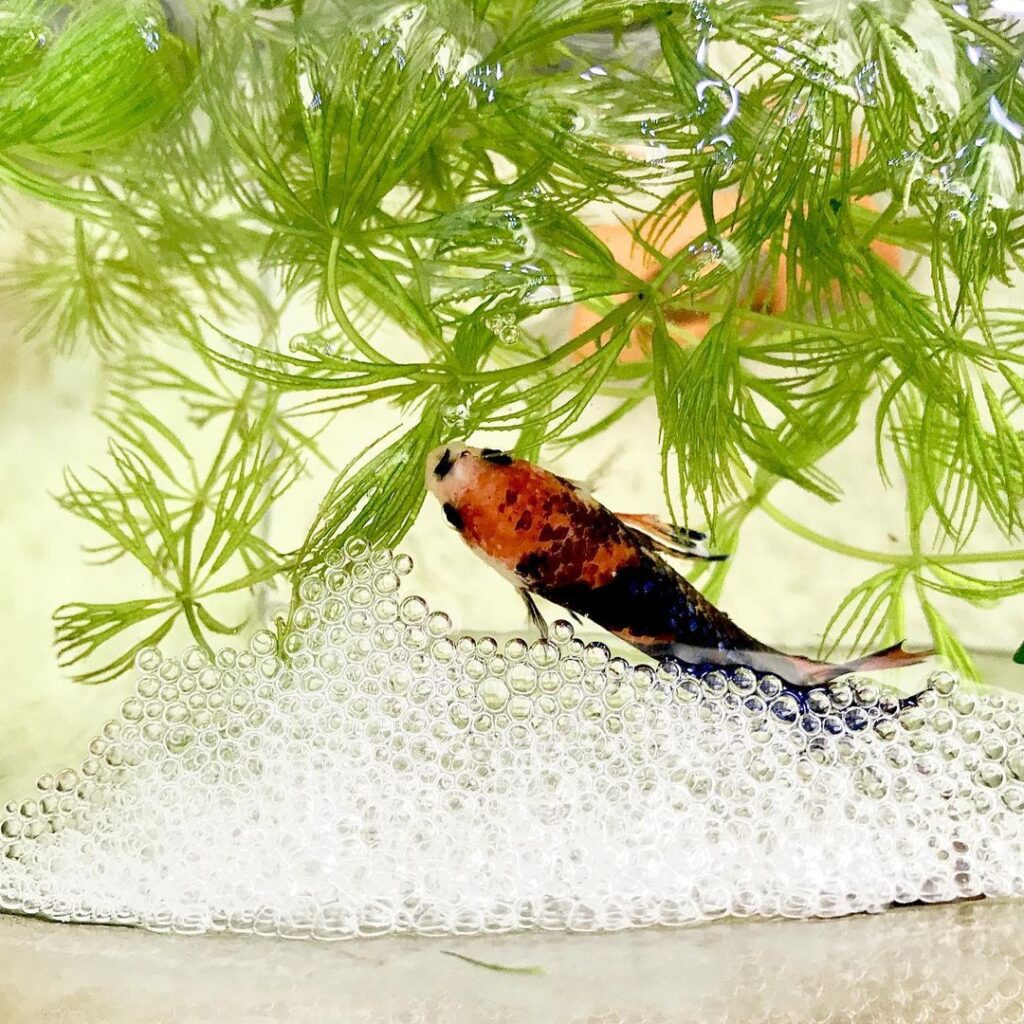
4. How many eggs are expected to hatch? – Betta Fish Fry Care
In general, 70 percent of eggs hatch in a healthy breeding environment. The hatching rate decreases as the number of eggs increases. This is because it becomes more challenging for a male betta to care for a large quantity of eggs at once.
If your betta fish lays a moderate number of eggs, such as 40, you can anticipate approximately 25-30 fry after three days in the healthy breeding tank. This is provided that you have created a suitable environment and taken the necessary measures for their well-being.
5. Can betta eggs hatch without a male?
Betta fish eggs cannot hatch without a male. But, female Bettas can lay eggs without a male, especially when they are fully loaded with eggs. The female Betta can release itself, but eggs become unfertilized without the male.
Fertilization occurs when the male betta secretes sperm to fertilize the eggs. Without male sperm, eggs cannot be fertilized or hatched. Unfertilized eggs will eventually spoil or be consumed by the female betta itself or other fish in your tank.
6. How long does it take for betta babies to grow?
Betta babies take approximately 4 to 5 months to reach full maturity. Their fins are fully developed at this stage, and their color will be vibrant and shining. And it is at this stage that the Betta is ready to breed as well. But betta eggs start no bigger than 0.03 inches in diameter. In just 10 weeks, these babies can grow up to 1.5 inches long.
At around five months, the Betta reaches full size with fully functioning scales and fins. The size and growth rate of bettas vary according to their genetics and tank conditions.

7. How do male betta fish fertilize eggs?
Male betta fish fertilize the eggs by releasing milt into the water. This is the most crucial aspect of betta fish mating. In the absence of a male betta, the female can still produce eggs, but the eggs will die and rot.
They cannot hatch unless a male betta fertilizes them. For a successful breeding setup, the male must embrace the female, release eggs into the bubble nest, and release milt in order to fertilize it.
8. What should I do if the eggs don’t hatch?
As was previously mentioned, if your betta fish’s eggs don’t hatch after three days, they are most likely unfertile. So, you should intervene before rotten eggs ruin the water quality.
If you see no changes in the eggs after 72 hours, you should take them out. You have to do that even if it disturbs your betta’s bubble nest. Since rotten eggs produce ammonia and nitrates, they lower the pH and make it difficult for your betta fish to breathe. In general, male betta fish in your breeding tank know the risk of rotten eggs. Males usually eat rotten eggs that do not have any signs of fertilization to save other healthy eggs.
Ammonia and nitrite should be kept at 0 ppm while nitrates should be below 20 ppm. The pH should range between 7.0 and 7.2. To do that, I personally use the API Test Kit. Product link in the description and pinned comments if you like to check it out.
9. What Happens to Pregnant Females Without a Male?
Female bettas usually wait for a viable mate before releasing their eggs. However, if there are no male betta present in the tank, sometimes they will re-absorb the eggs. It is common for betta to do this when they live in tanks that are exclusively for females. There have been instances where female bettas lay eggs without the male in the tank.
Many breeders and betta keepers have witnessed this in their tanks. But female bettas usually eat their own eggs immediately after release. Betta fish fry care knowledge is less among the fishkeepers, this is one reason why many people assume that female bettas cannot lay eggs without male fish.
10. How frequently do Betta Lay Eggs? – Betta Fish Fry Care
Female betta fish lay eggs regularly, and egg-laying frequency can vary depending on various factors. Bettas usually lay eggs every few weeks.
The exact timing of egg-laying can be influenced by factors such as the age, health, and reproductive maturity of the female betta, as well as environmental conditions and the presence of a male betta for mating. It’s important to note that egg-laying frequency can also be affected by betta breeders’ breeding and conditioning practices.
11. What tank conditions determine successful hatching?
An ideal water quality is crucial for betta eggs to hatch. It is essential to maintain clean water and ensure that pH and ammonia levels are within appropriate ranges.
Temperature directly influences betta egg hatching rates. Higher temperatures generally result in faster hatching. The optimal temperature range for betta eggs is 79 to 82 degrees Fahrenheit. It usually takes about two to three days for betta frys to hatch.

